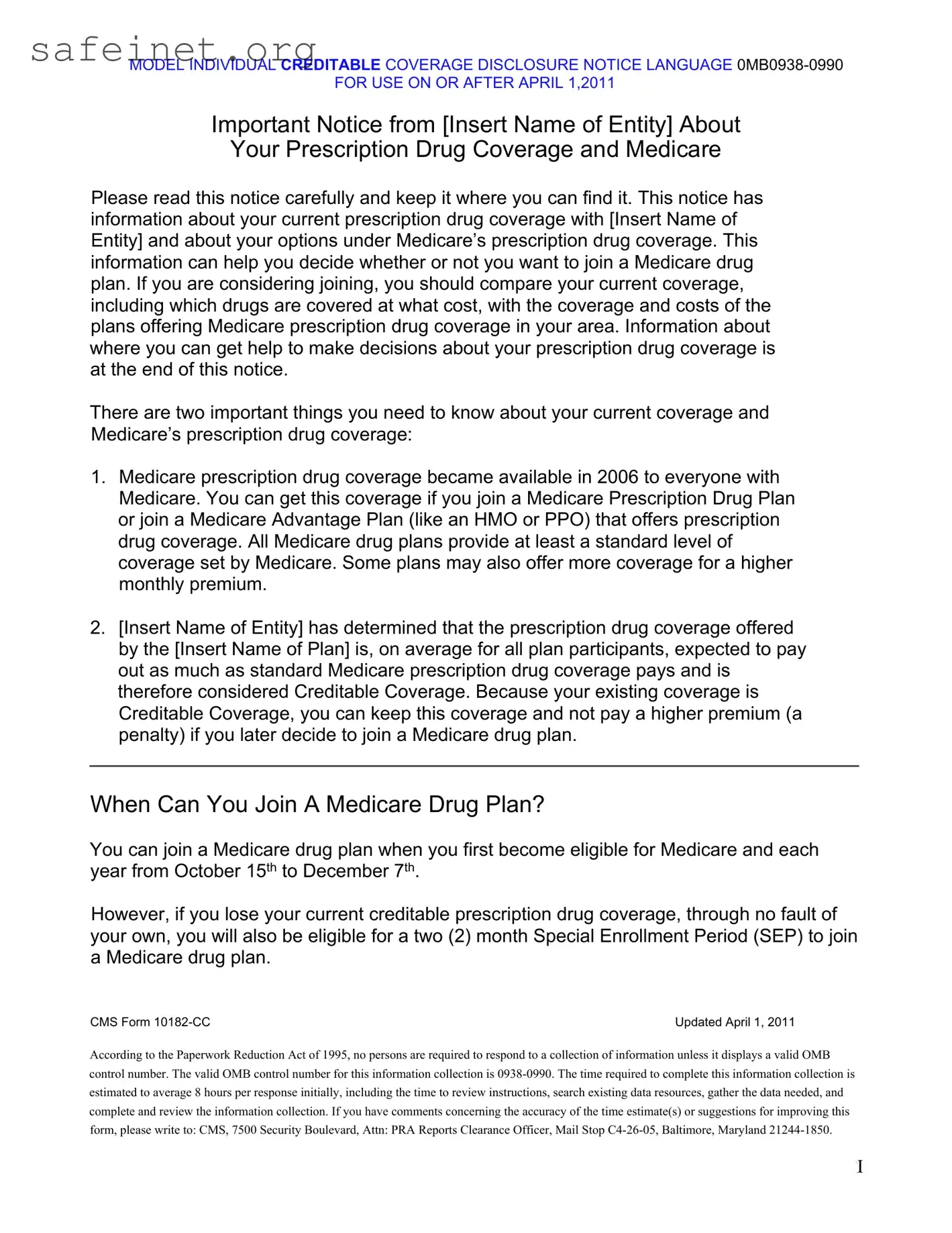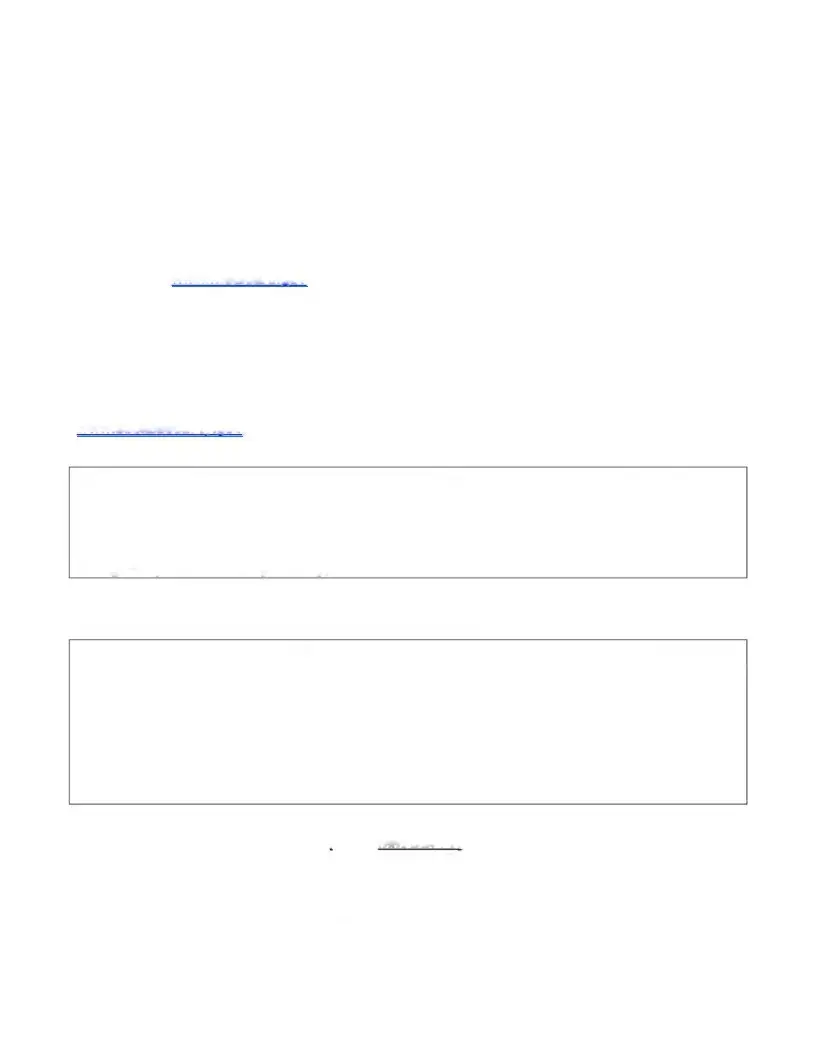What is the CMS 10182 CC form?
The CMS 10182 CC form is a disclosure notice that informs Medicare beneficiaries about their current prescription drug coverage. It highlights the options available under Medicare’s prescription drug coverage and indicates whether their current coverage is considered "creditable.” This means it is comparable to standard Medicare prescription drug coverage, which allows individuals to avoid future premium penalties if they choose to join a Medicare drug plan later on.
Who needs to receive the CMS 10182 CC form?
This form is intended for individuals who are eligible for Medicare and have existing prescription drug coverage through their employer or another entity. It is crucial that this information is communicated to help beneficiaries make informed decisions regarding their prescription drug coverage as they approach Medicare eligibility.
What does "Creditable Coverage" mean?
Creditable Coverage refers to any prescription drug coverage that is expected to pay, on average, as much as standard Medicare prescription drug coverage. If your current plan is deemed creditable, you can maintain it without facing a higher premium should you decide to join a Medicare drug plan in the future.
When can individuals join a Medicare drug plan?
Individuals can join a Medicare drug plan when they first become eligible for Medicare. Additionally, there is an annual enrollment period from October 15th to December 7th each year. If someone loses their current creditable prescription drug coverage unexpectedly, they qualify for a two-month Special Enrollment Period to join a Medicare drug plan.
What happens to my existing coverage if I join a Medicare drug plan?
If you decide to join a Medicare drug plan, your existing coverage may or may not be affected, depending on the provisions of your current plan. Some plans allow you to keep your coverage while coordinating benefits with Medicare, while others may terminate your existing plan upon enrollment in Medicare. It is essential to clarify this with your current provider before making changes.
What are the consequences of dropping my current coverage?
If you drop your current coverage and do not enroll in a Medicare drug plan within 63 days, you may incur a premium penalty. This penalty can lead to higher monthly premiums for every month you were without creditable coverage. For example, if there is a gap of 19 months, your monthly premium could be raised by at least 19% of the base Medicare premium.
How often will I receive the CMS 10182 CC form?
You will receive this notice annually, as well as before the next enrollment period for a Medicare drug plan. Additionally, if there are changes to your coverage through your current plan, you will also obtain an updated notice to reflect these changes.
Where can I find more information about Medicare prescription drug coverage?
More detailed information is available in the “Medicare & You” handbook, which is mailed out each year by Medicare. You can also visit the Medicare website at www.medicare.gov or call their helpline at 1-800-MEDICARE for assistance. State Health Insurance Assistance Programs can also provide personalized help if needed.




